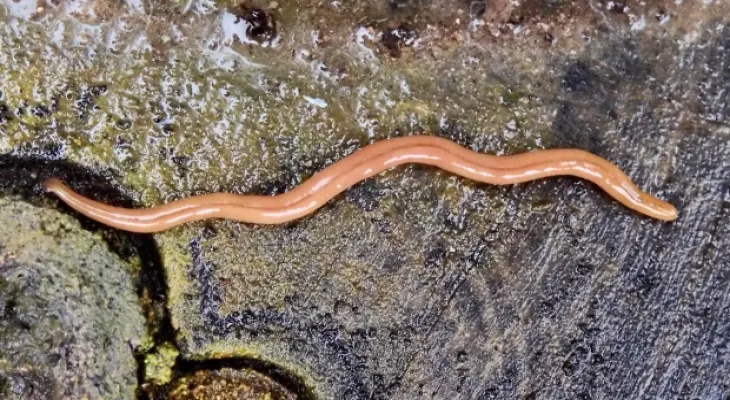Search here
Newspaper
Search here

Arab Canada News
News

Published: April 27, 2024
Ontario is now home to invasive and venomous worm species that can grow up to three feet long and pose a danger to small animals and pets.
Several reports have stated that hammerhead worms, also known as broad-headed flatworms, have recently been spotted in Newmarket, Hamilton, and the Kitchener area.
John Reynolds, a lab biologist and worm expert, told CTV News Toronto on Friday, “They are here,” “People are surprised to see them because they are very unusual, people are not used to seeing them, and they are originally subtropical creatures.
Reynolds added that the worms, which originally came from Southeast Asia, were likely accidentally brought to the province through nursery stock possibly from the United States. For years, the worms have been observed throughout America and in Quebec.
Reynolds continued, “They don’t move far on their own; they need to be transported. They can also spread quickly because if you cut them, each piece becomes a new individual.”
Reynolds said that the hammerhead worm, which got its name due to the flat shape of its head, contains a highly dangerous neurotoxin called tetrodotoxin, which is also found in pufferfish. While the toxin can be fatal to small animals, it will only cause a rash in humans.
He added, “They do not harm people seriously,” “They may cause a terrible rash and make your hands feel tingly for a while. If you accidentally ingest one, it will make you nauseous, but it will definitely not be fatal.”
The worm expert in Kitchener advised people not to pick up the worms with their bare hands and to always use gloves or a spade to handle them.
People have been filing reports and posting pictures of hammerhead worms they have found in Ontario on iNaturalist.ca, a platform for reporting invasive species. The most recent reports date back to the end of March, but there are reports of the worms in the province dating back to 2019.
Reynolds said, “These worms have been here, but in such low numbers that they were originally overlooked, but they have become more noticeable recently,” adding that as the number of these worms increases, so do the sightings and awareness.
Emily Boustardo from the Invasive Species Center told CTV News Toronto on Friday that she encourages people to report any sightings of worms or any invasive species to the center or on iNaturalist.ca. She added that in some cases, it will be important to report invasive species to the Canadian Food Inspection Agency.
She added, “It’s best to get accurate information about the location, any address, and get some pictures because that’s the only way to confirm the discovery.”
The Ontario Ministry of Natural Resources and Forestry told CTV News Toronto that they encourage people to report sightings through their early detection and distribution mapping system, which is an online tracking system.
Comments